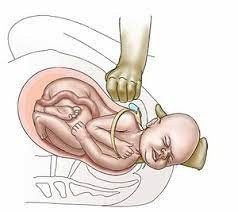The nurse anticipates the vaginal delivery of a client who has been induced for macrosomia. The provider asks the nurse to apply suprapubic pressure. The nurse knows that suprapubic pressure is applied:
At the maternal umbilicus.
Over the symphysis pubis.
Lower left quadrant of the abdomen.
At the fundus of the uterus.
The Correct Answer is B
Suprapubic pressure aids in the delivery of the fetal shoulders, and delivery of the fetal head. to control postpartum hemorrhage and to assess uterine tone after delivery.

Nursing Test Bank
Naxlex Comprehensive Predictor Exams
Related Questions
Correct Answer is B
Explanation
The Web of Causation model would be best for studying the complex relationships among factors that contribute to chronic disease. This model recognizes that chronic diseases result from the interplay of multiple factors at different levels, including individual, environmental, and societal factors. The model illustrates the complexity of these relationships and can help identify potential points for intervention.

Correct Answer is D
Explanation
The baseline fetal heart rate is the average heart rate over a 10-minute period, excluding accelerations and decelerations, and is an important indicator of fetal well-being during labor.
A baseline fetal heart rate of 110-160 beats/min is considered normal. A baseline heart rate of less than 110 beats/min is considered bradycardia, which can be a sign of fetal distress or hypoxia. A baseline heart rate greater than 160 beats/min is considered tachycardia, which can also be a sign of fetal distress or hypoxia.
Whether you are a student looking to ace your exams or a practicing nurse seeking to enhance your expertise , our nursing education contents will empower you with the confidence and competence to make a difference in the lives of patients and become a respected leader in the healthcare field.
Visit Naxlex, invest in your future and unlock endless possibilities with our unparalleled nursing education contents today
Report Wrong Answer on the Current Question
Do you disagree with the answer? If yes, what is your expected answer? Explain.
Kindly be descriptive with the issue you are facing.
